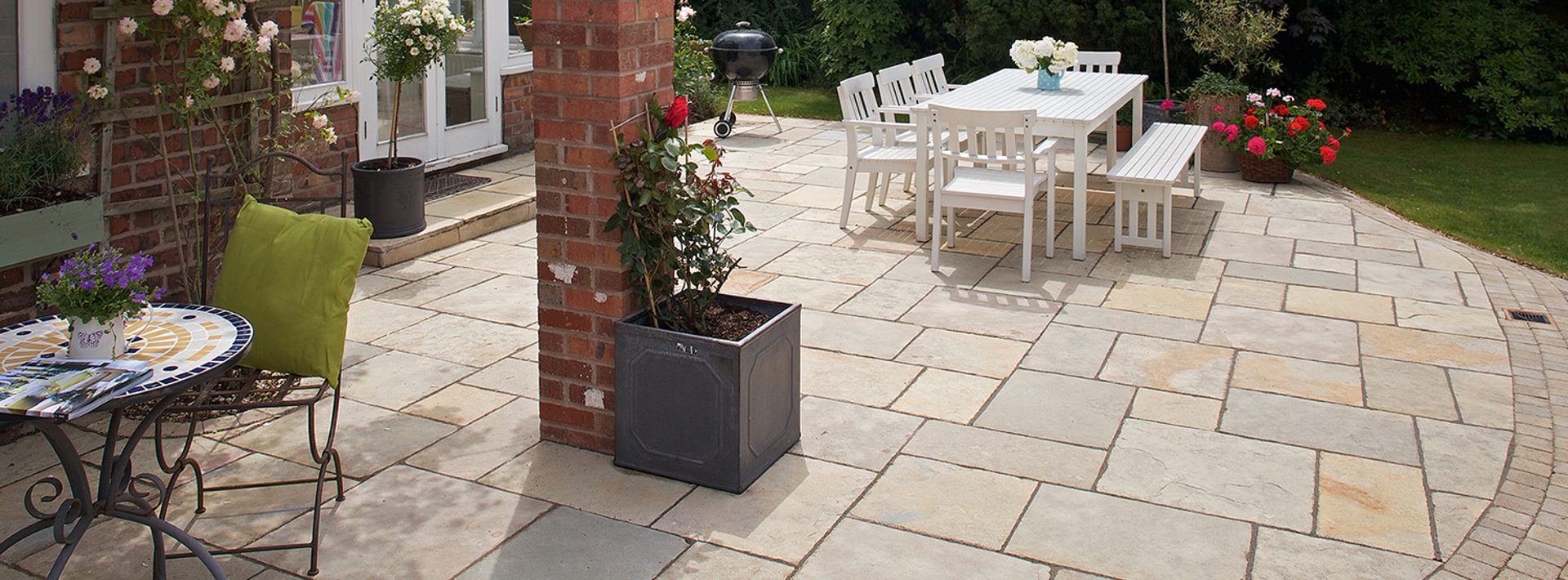Blog
Designing a patio and transforming your outdoor space is undoubtedly an exciting project. It gives you the chance to extend your living space outdoors, creating an area to relax, entertain and get a little bit closer to nature.
But with so many design elements to consider and lots of different aesthetic avenues to choose from, it can also seem like a lot of work.
So, we've put together these top tips to help you ensure that your patio looks exceptional, functions as an outdoor living space, and that your money goes further.
Here, we explore practical considerations and patio design ideas to help awaken the garden designer in all of us. This way, you can build the perfect space for yourself and those closest to you.
Five practical tips for designing your perfect patio
Before diving into the specific design elements, here are some areas to consider when planning your patio.
You need to take these into account before construction starts to ensure that your patio is in tip-top condition.
Choose a colour scheme and aesthetic
Picking a consistent colour scheme will tie your patio together, making it feel cohesive and intentional. Whether you prefer natural tones that blend seamlessly into the garden or multiple bolder, modern hues, decide on a palette early and apply it to everything – from your furniture to your plants.
To create a haven for relaxation, you should consider cushioned seating, Indian sandstone paving and soft green plants to create a calming vibe, while pops of colour can add personality.
Likewise, if you want your garden space to follow a nautical theme, e.g. because you have a pond or water feature, you could opt for blue plants, pebbled pathways and wooden features like decking and furniture.
Pick the right position and space
One of the most significant decisions you'll make regarding your patio is where to put it.
For alfresco dining and accessibility, locating it next to your property is the most convenient choice. However, if you want a quiet corner to escape to on sunny days, installing a patio away from the home can help.
Another factor that will affect your patio's placement is sunlight. When the sun is out, you'll either want to safely enjoy the rays or retreat to somewhere shaded, so make sure you include this in your patio planning.
Select the right materials
When it comes to choosing materials, durability and quality are the order of the day. In addition to picking patio materials that complement the rest of your garden and home, you need to ensure they can withstand the weather and support the furniture and foot traffic on top of it.
This extends beyond whether you'll choose decking paving to patio furniture and cooking areas, too.
Install proper drainage
Although it's not the most exciting element of patio design, installing proper drainage is crucial. Without it, your space could be left with standing water, and your paving slabs or outdoor tiles may be affected.
To avoid this, you should install a drainage system. Planning for water runoff will prevent pooling and keep your patio in top condition for longer.
Improve privacy
If your patio feels slightly exposed, you can easily add privacy with outdoor screens, trellises, or tall plants. Alternatively, bamboo fencing or decorative screens can create a secluded space without feeling too closed in.
Five features to add to your patio design
Once you've considered the basics, it's time to explore some additional features that can elevate your patio ideas:
Verandas and awnings
Verandas and awnings are great for providing shelter and extending the use of your patio. They create shade during the hottest parts of the day and can protect you from light rain, so you can enjoy your space regardless of the weather. A retractable awning offers flexibility, giving you shade when needed and open skies when you want them.
Garden rooms
Garden rooms – separate sections of your patio or garden that serve different purposes – can make your outdoor space feel larger and more dynamic. You could divide your patio into distinct areas using planters, outdoor screens, or even different flooring materials.
Essentially, you're creating rooms without walls. You could have one for dining, another for lounging, and maybe a third for an outdoor herb garden.
Herb gardens and vegetable patches
Speaking of herb gardens, they're a fantastic addition to any patio. Not only are they practical for cooking, but they also add fragrance and greenery.
Plant herbs or other produce, such as onions, lettuce, and tomatoes, in raised beds near your cooking or dining area, and enjoy the fresh scent of basil, mint, and thyme while you relax. Some plants can take over, so for herbs like mint you may want to consider plant pots instead for easy maintenance.
Cooking space
If you enjoy cooking outdoors, leave space for a BBQ or even a full outdoor kitchen. This could be as simple as a dedicated area for a portable grill or a more permanent structure with countertops, storage, and a built-in barbecue.
The key is to position your cooking area away from high-traffic zones, like pathways, to avoid congestion while keeping it close to the seating and dining areas for easy serving.
A patio circle
A paving circle creates a stunning focal point and can accentuate seating areas, fire pits and dining areas.
Using different materials, like contrasting-coloured paving stones, will highlight the circle and create a feature your guests will admire.
A fire pit
A fire pit can be a great social area for you and your guests, providing warmth as the sun sets. Fire pits are also an attractive feature for those wanting to elevate their outdoor space and are available as gas lit or with traditional wood burning. You can play with heights in your garden design with either a sunken or raised firepit, but both come with expected safety precautions for children and pets. Be sure to use paving materials that can withstand the heat and weight of a firepit. It is recommended that you seek advice from a trusted installer for the installation and safety requirements for firepits.
What are the key elements of a patio?
Getting the key elements right is essential to designing the perfect patio. From flooring to furniture, each component plays a role in shaping how the space looks and functions. In this section, we explore the importance of each piece of the patio puzzle.
Flooring
Choosing the most suitable flooring materials can make all the difference. Paving slabs, outdoor tiles, and decking are popular choices, each with its own style and benefits.
Your choice of flooring will not only influence the appearance but also the comfort and durability of your patio, so it's worth investing in high-quality materials.
Furniture
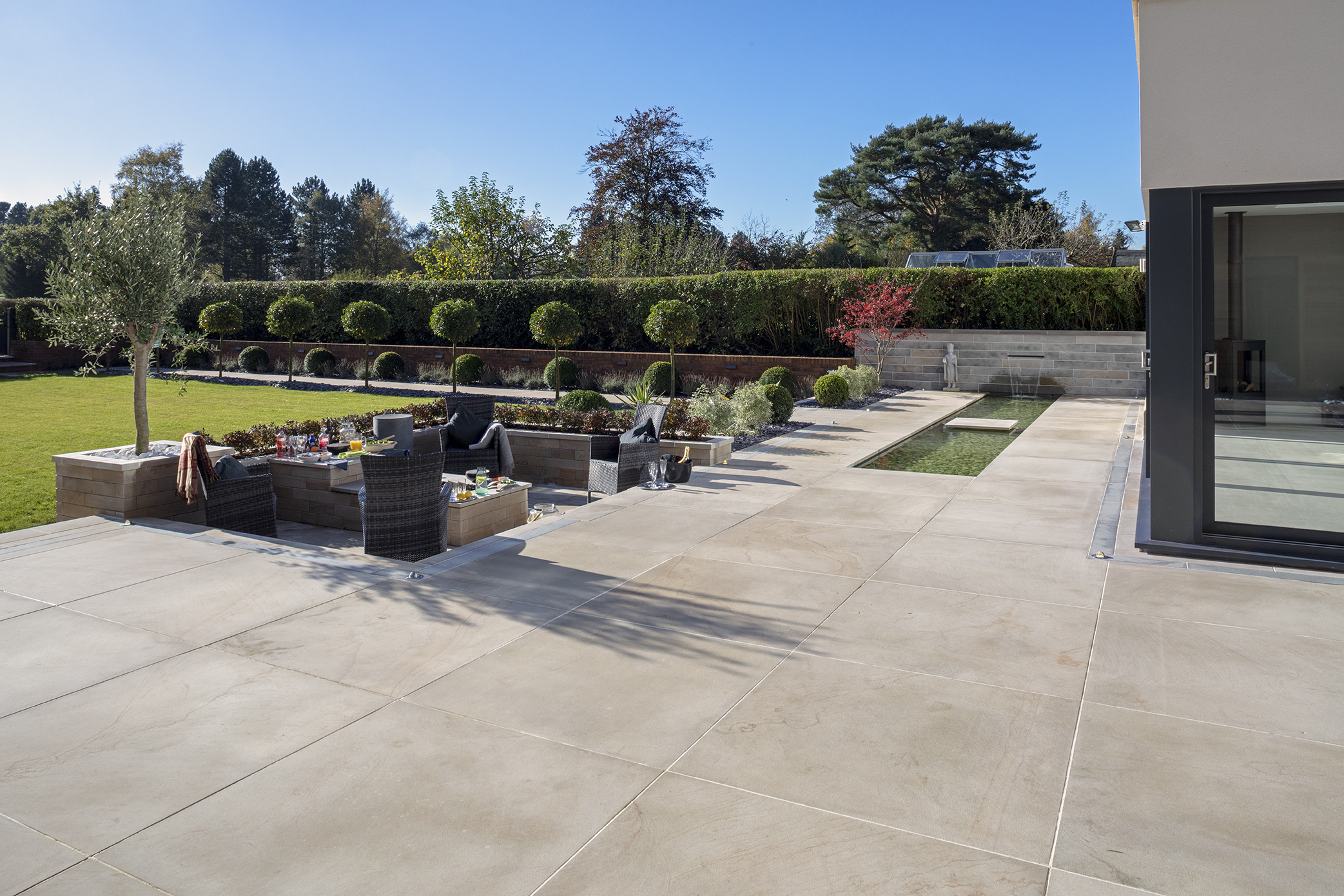
A well-designed seating area is essential for any patio, whether you're hosting guests or simply enjoying a quiet moment outdoors.
From cushioned outdoor sofas to sleek dining sets, your garden furniture choices should reflect how you plan to use the space. Lounge areas with soft seating are perfect for relaxation, while a large patio table and chairs are a must for meals and gatherings.
Another key furniture consideration is its arrangement. Placing seating in a circle encourages conversation, while corner sofas maximise space and give a cosy feel.
Don't forget to consider the flow of traffic around the seating area as well, it needs to be set out in a way that maintains both comfort and accessibility.
Lighting
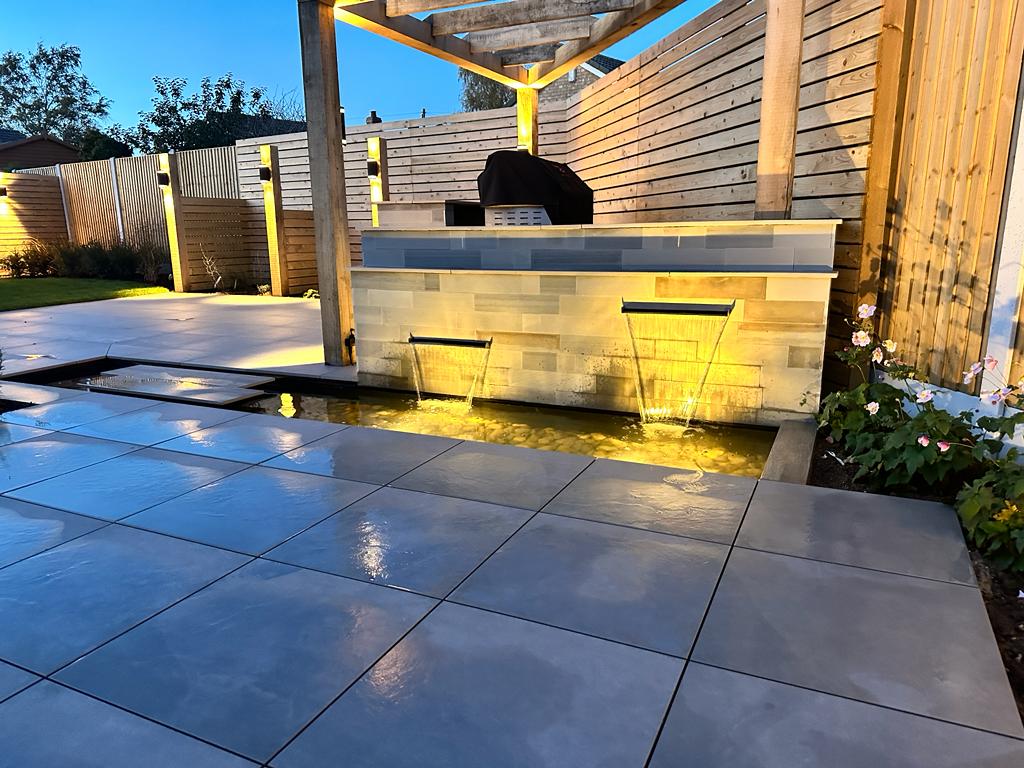
Picking the proper lighting accentuates your outdoor space and even helps you extend its use well into the evening. For a soft glow that creates a warm, inviting atmosphere, consider string lights, lanterns or solar-powered lights - placing them around seating areas and along pathways to increase visibility.
Similarly, if you have a cooking space or dining area, consider wall-mounted lights or spotlights to ensure these zones are well-lit when the sun sets.
Cooking space
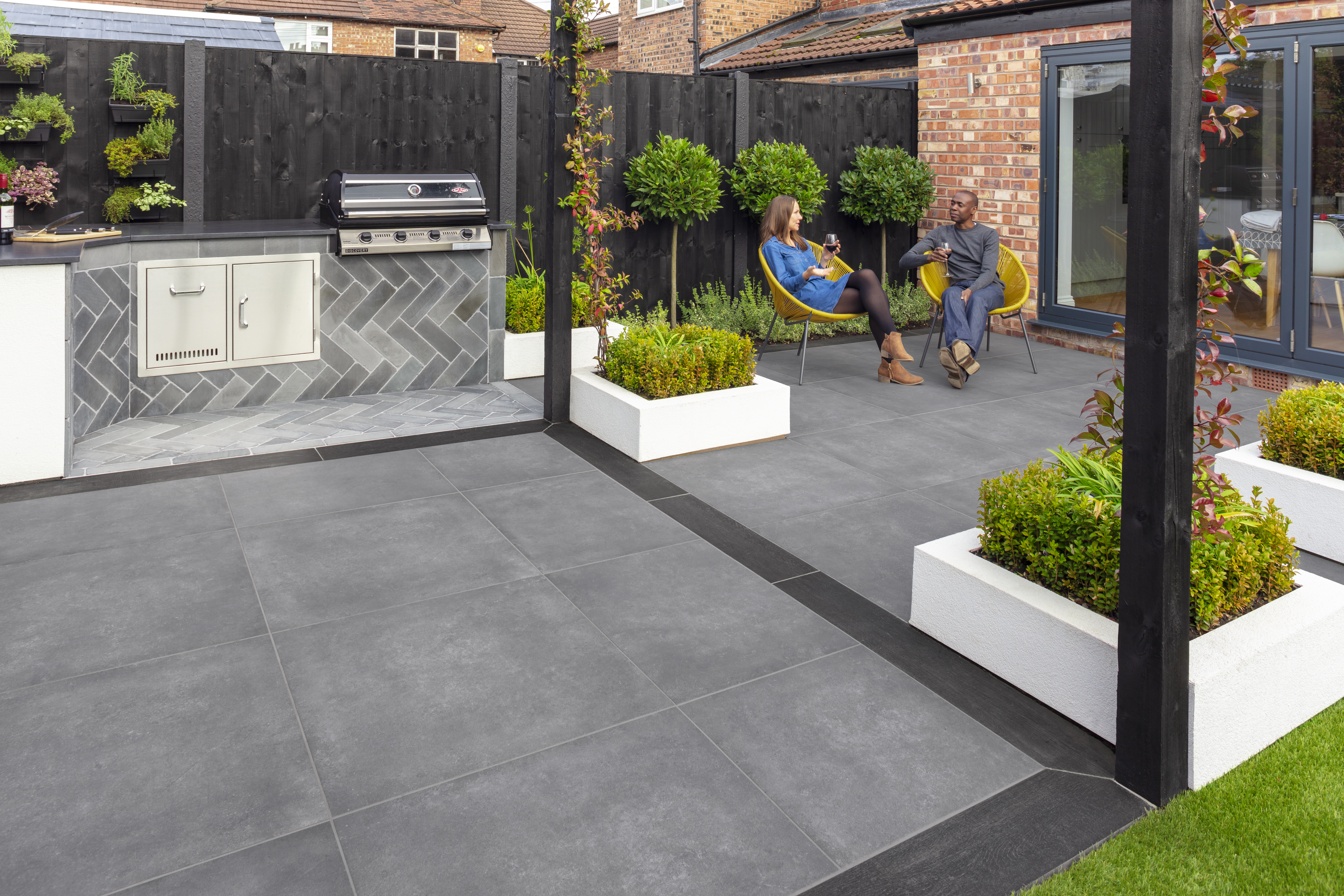
An outdoor dining area is a must-have for those who love to entertain or cook al fresco.
If you have the space, consider an outdoor kitchen with counter space and storage. This will make meal preparation more straightforward and more enjoyable.
When it comes to positioning, you need the cooking area to be near your dining area but far enough away to keep the smoke and heat from disturbing seated guests.
How to choose the right flooring for your patio
Selecting the right paving and flooring is one of the most important decisions you'll make when you're designing your patio.
The material you choose will impact not only the look of your patio but also its durability and maintenance needs. To help you make the right decision for your wallet and patio, here’s a quick rundown of the most popular patio flooring options, their advantages, and the types of garden design they suit best.
Natural stone slabs
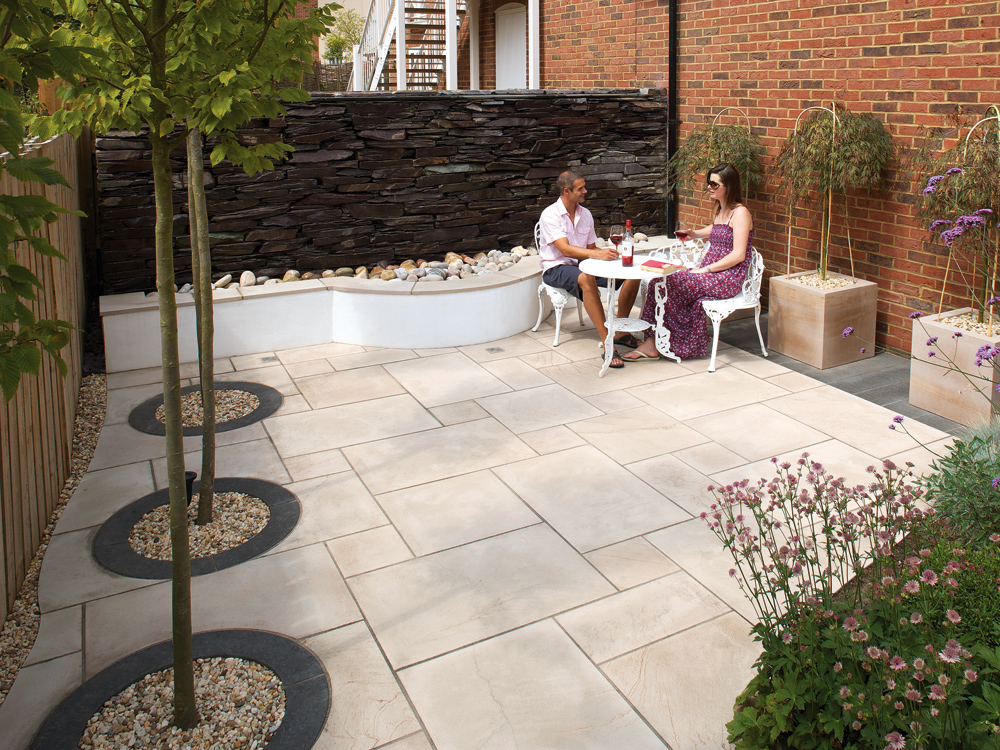
Available in colours, textures and styles to suit all aesthetic preferences, natural stone patios are classically understated and extremely durable. Better still, natural stone paving can withstand heavy loads and whatever the British weather has to throw at it.
Sandstone and slate, for example, offer a timeless elegance and come in a vast range of shades and finishes that blend beautifully with other natural characteristics, like water features and plants.
Porcelain tiles

Porcelain tiles are another popular option thanks to their modern look and practicality. Another bonus is that they’re non-porous, which makes them resistant to stains, frost, and fading. Not only do they look good, but they’re an excellent low-maintenance option.
The clean lines and smooth surface of porcelain create a refined look, especially in modern spaces and minimalist gardens. If you’re after a more natural feel, you could choose tiles that mimic textured stone or wood grain, like our Symphony Porcelain Plank Paving.
Gravel
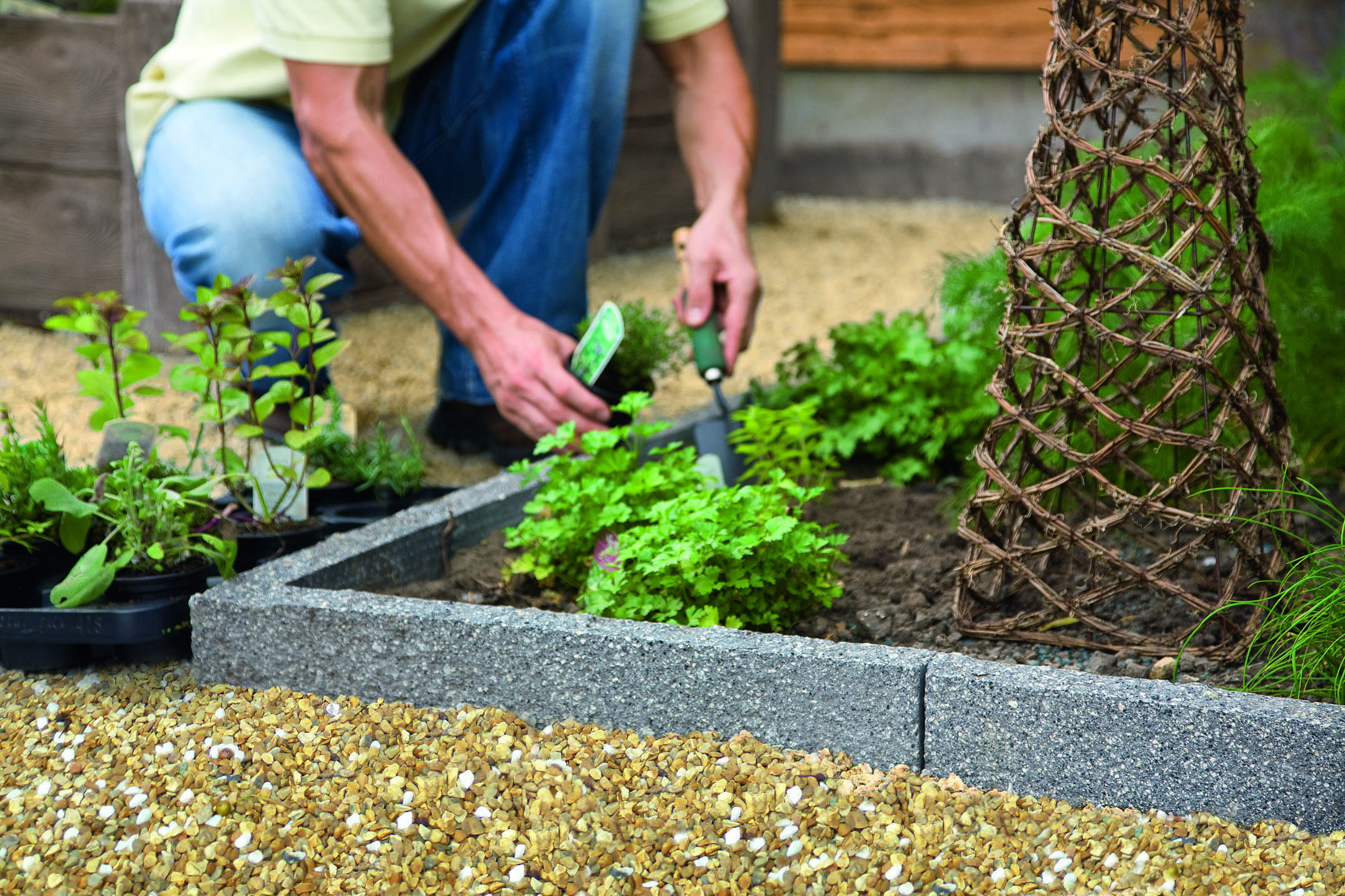
Gravel is a budget-friendly and flexible option for patios. It's easy to install and can be used to cover large areas or define specific zones, like pathways or seating areas.
Additionally, it comes in a wide variety of colours, so it can adapt to many different styles, like quaint cottages or Mediterranean-inspired gardens.
One drawback, though, is that it’s difficult to maintain. Gravel can easily be kicked around, and if it's not laid on a suitable membrane, weeds can start growing through it.
Decking
Although it is not nearly as durable as concrete or natural stone slabs, wood decking can help achieve a softer, more rustic-looking garden. Wood is especially popular with people striving for natural themes, like woodlands or the coast.
If you’re considering wood decking, you must ensure you do your research into the specific type of wood, as some may require expensive regular treatment.
If you want the wood-effect patio without the maintenance, porcelain printed tiles could be the answer, creating a warm and natural-appearing space.
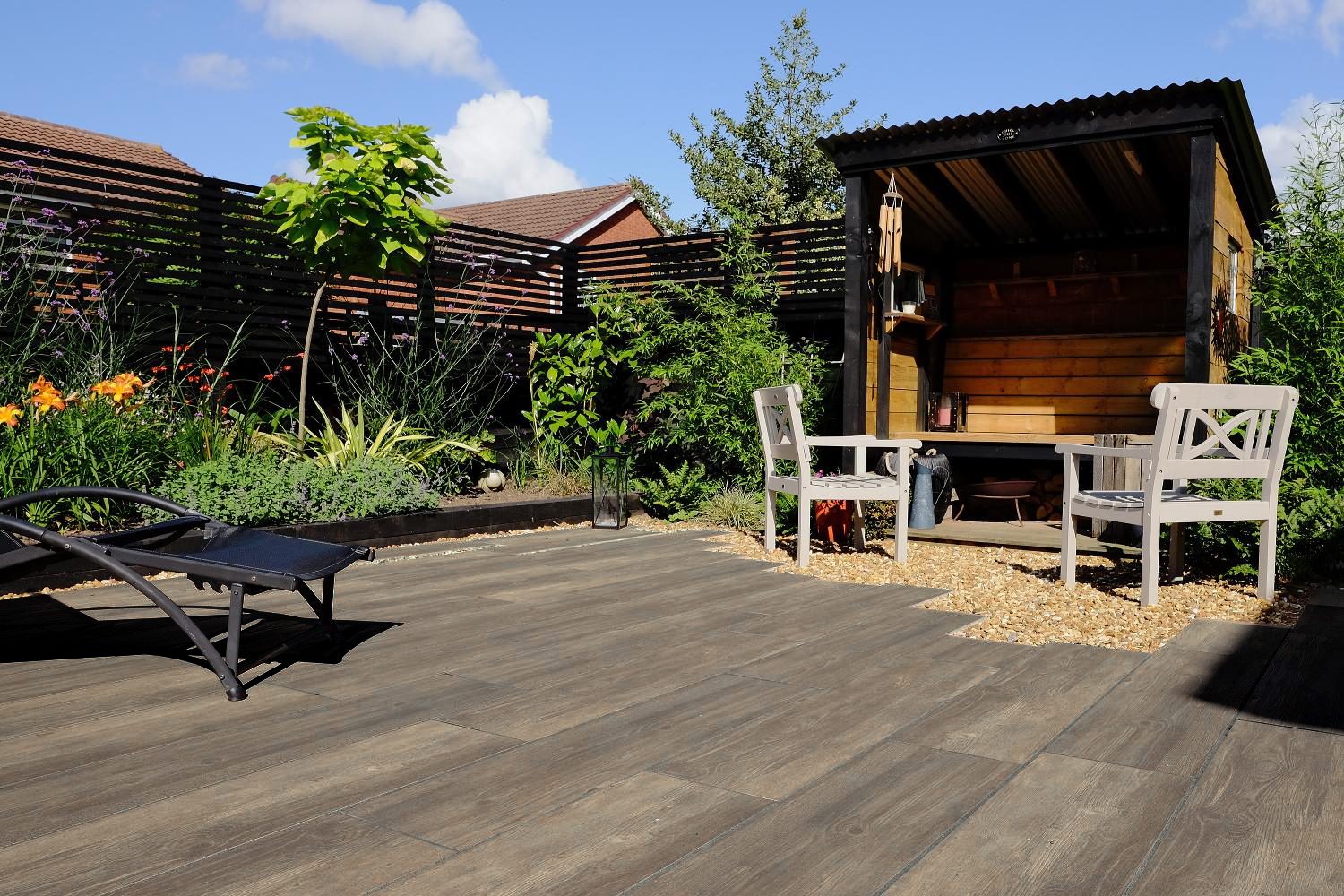
Concrete paving slabs
Concrete slabs are a cost-effective, versatile choice for patios. One of its main benefits is that it can be poured into different shapes and moulds. This means it can be cast in different finishes, textures, and colours, making it suitable for most patio themes and styles.
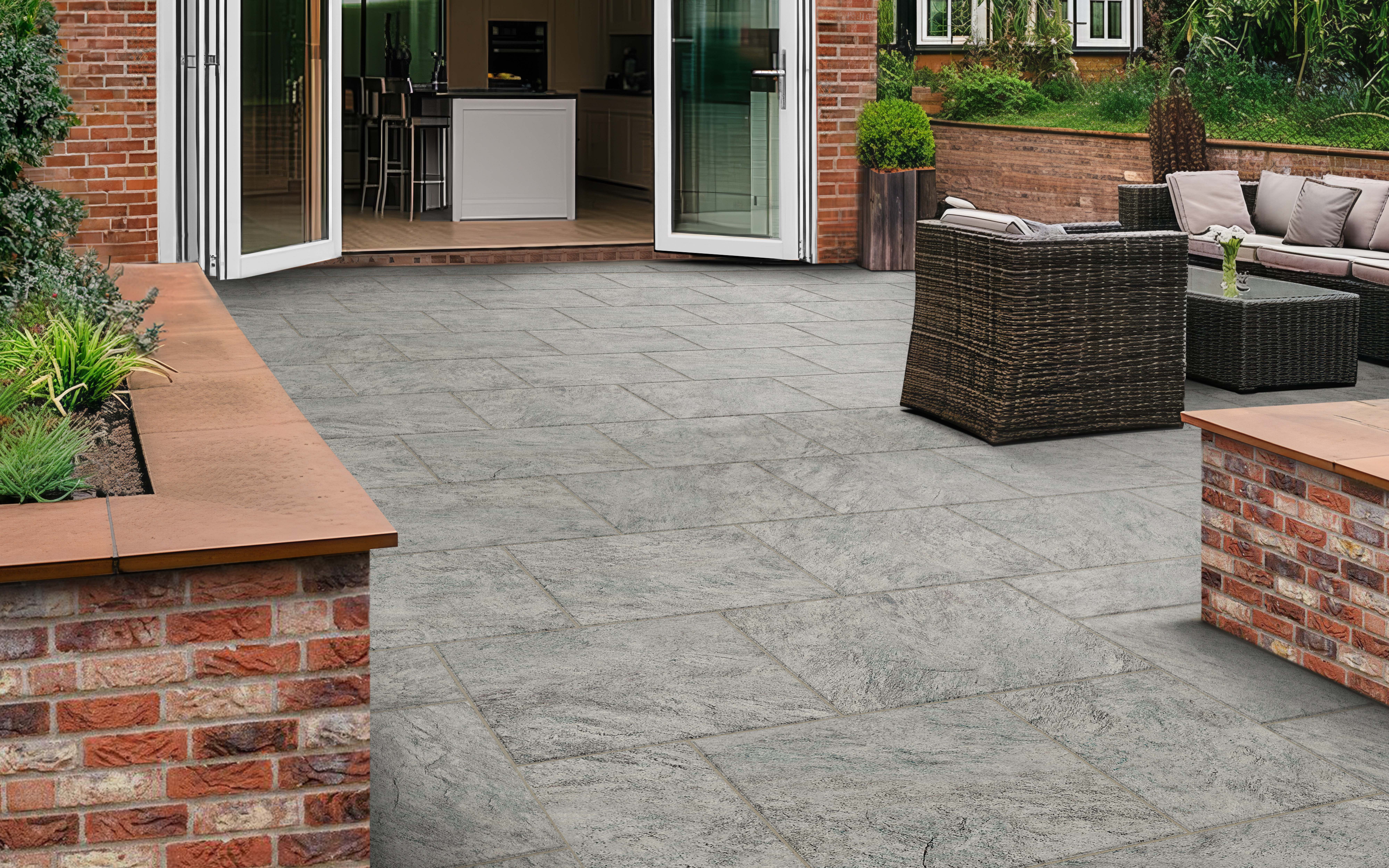
Bring your patio dreams to life with Marshalls
Now that you know our top tips, it's time to get designing your dream patio space.
Remember, for all your paving needs, Marshalls has the leading range of paving slabs, outdoor tiles, block paving, and more.
So, if you want to transform your outdoor space, discover granite, limestone and concrete paving solutions now.
And don’t forget our Outdoor Reality App. This uses cutting-edge augmented reality technology, enabling you to visualise how our premium outdoor tiles and paving slabs will look in your garden.
Once you’ve found a style, colour and texture that suits your aesthetic, the app will even measure your garden, ensuring you don’t order too much or too little. It’s that easy.
Still deciding which aesthetic and features to go for? You can’t rush these things, we understand. To help you identify the perfect patio, check out our inspiration hub.
Here, you’ll find tips, completed projects to get your creative juices flowing, including patio makeover inspiration, how to plan the perfect patio, seven ideas for small patios, and our budget patio design tips.








